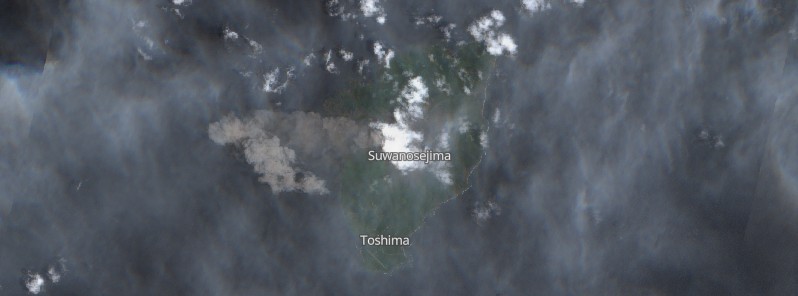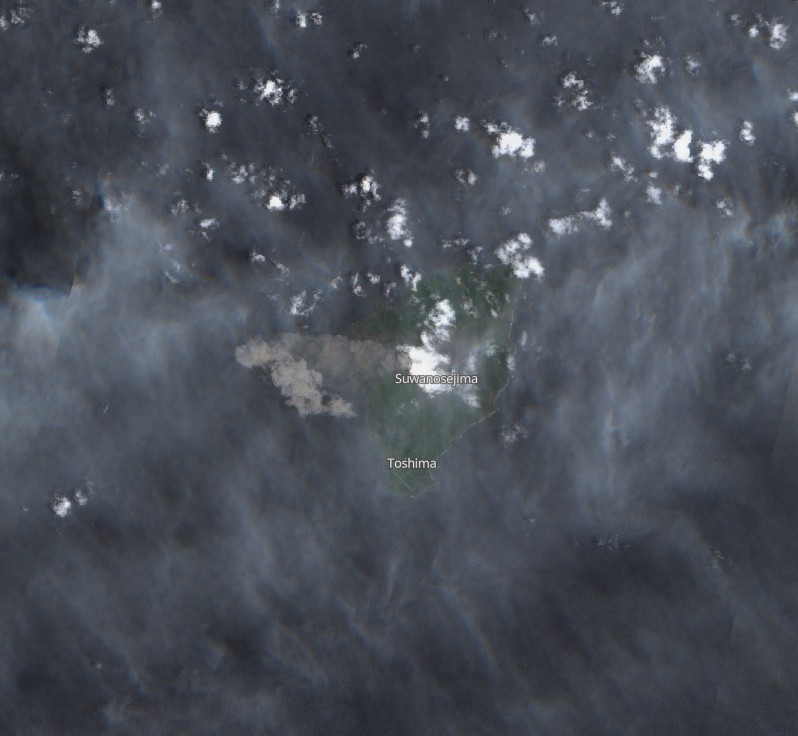Suwanosejima ejects large rocks 1 km (0.62 miles) from the crater, Japan

Suwanosejima volcano erupted at 15:04 UTC on June 22, 2021 (12:04 JST, June 23), ejecting large rocks as far as 1 km (0.62 miles) from the crater and prompting the Japan Meteorological Agency (JMA) to raise the Volcanic Alert Level from 2 to 3 (on a scale of 1 – 5).
At this level, residents of Toshima Village and tourists are advised to refrain from entering the danger zone.
A smaller explosion occurred at the volcano's Otake crater at 01:54 UTC on June 21, ejecting large volcanic material 900 m (2 959 feet) NW of the crater.
The explosions intensified and became more frequent on June 22, with 5 explosions within 6 hours. The volcanic ash plume rose up to 1 200 m (3 940 feet) above the crater — this is 1 996 m (6 550 feet) a.s.l.
JMA warned the volcano has the potential to eject big rocks within about a 2 km (1.2 miles) radius of the crater.

Image credit: Copernicus EU/Sentinel-2, TW. Acquired on May 31, 2021

Image credit: Copernicus EU/Sentinel-2, TW. Acquired on April 26, 2021
Geological summary
The 8 km (5 miles) long, spindle-shaped island of Suwanosejima in the northern Ryukyu Islands consists of an andesitic stratovolcano with two historically active summit craters. The summit is truncated by a large breached crater extending to the sea on the east flank that was formed by edifice collapse.
Suwanosejima, one of Japan's most frequently active volcanoes, was in a state of intermittent strombolian activity from Otake, the NE summit crater, that began in 1949 and lasted until 1996, after which periods of inactivity lengthened.
The largest historical eruption took place in 1813 – 14 when thick scoria deposits blanketed residential areas, and the SW crater produced two lava flows that reached the western coast.
At the end of the eruption, the summit of Otake collapsed forming a large debris avalanche and creating the horseshoe-shaped Sakuchi caldera, which extends to the eastern coast.
The island remained uninhabited for about 70 years after the 1813 – 14 eruption.
Lava flows reached the eastern coast of the island in 1884.
Only about 50 people live on the island.
Featured image credit: Copernicus EU/Sentinel-2, TW. Acquired on May 31, 2021

Commenting rules and guidelines
We value the thoughts and opinions of our readers and welcome healthy discussions on our website. In order to maintain a respectful and positive community, we ask that all commenters follow these rules:
We reserve the right to remove any comments that violate these rules. By commenting on our website, you agree to abide by these guidelines. Thank you for helping to create a positive and welcoming environment for all.